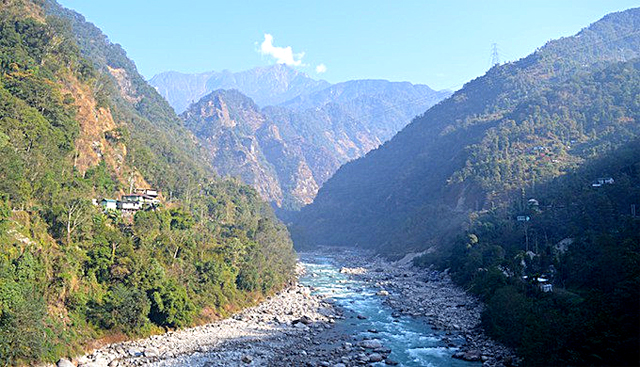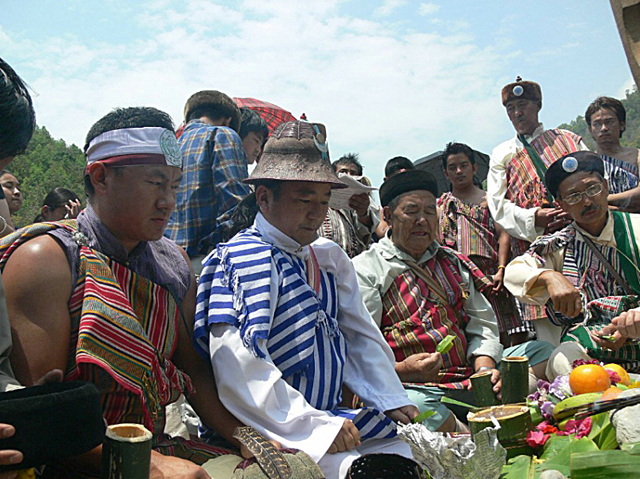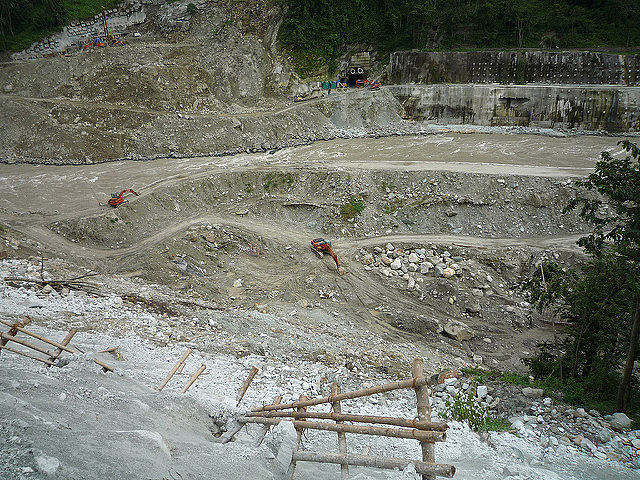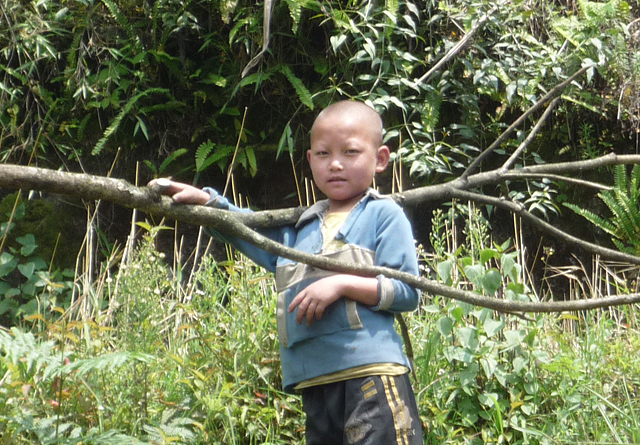Despite protests by the Lepchas that the Teesta River and its tributaries are sacred, the Government of Sikkim continues to press for additional hydroelectric dams. India Climate Dialogue published a review last week by Athar Parvaiz of the reasons for Lepcha opposition to the dams, which are in various stages of planning.

The government of India’s state of Sikkim has signed letters of intent to construct 27 power projects in the Teesta River drainage system with a total generating capacity of 5,494 megawatts of power. Opposition by the Lepcha people over the years has caused four of them to be scrapped, though two have been built. Several others are pending.
The Lepchas added another dimension to their arguments last July when UNESCO declared Mt. Kanchenjunga as a World Heritage Site. Kanchenjunga is the third highest mountain in the world and is the source of some of the Teesta River tributaries. The mountain and surrounding massif, looming on the western border of Sikkim and already protected within India as the Kanchenjunga National Park, is at the heart of Lepcha religious beliefs. The UNESCO designation clearly bolsters the case for their opposition.

Mr. Parvais quoted from the UNESCO website entry about Kanchenjunga: “Mythological stories are associated with this mountain and with a great number of natural elements (e.g. caves, rivers, lakes, etc.) that are the object of worship by the indigenous people of Sikkim.” It is clear that the rivers draining the mountain range are also sacred.
The Lepchas maintain that the UNESCO recognition points up the fact that an environmental impact assessment and an Expert Appraisal Committee report, both of which approved the most recent scheme, the Teesta Stage IV project, ignored the sacred character of the Kanchenjunga range.

Gyatso Lepcha, the general secretary of Affected Citizens of Teesta (ACT), a group that has opposed the dams on behalf of the Lepcha for many years and has gotten extensive coverage in the news, argued that the UNESCO designation provides added importance to their stance. He said that his group is anticipating a decision by the government to scrap the Teesta Stage IV project. If it does not, ACT will submit a written petition to UNESCO pointing out how designated sites are being treated within India. Gyatso said that two of the completed projects, Teesta III and V, produce over 1,700 megawatts of power, only 112 of which are used within Sikkim. The remainder is sold to the rest of India.
Officials in Sikkim disagree with Gyatso, arguing that the power projects will help the remote regions of the state become more prosperous. According to Namgyal Tshering Bhutia, Secretary of the Sikkim Energy and Power Department, some of the communities in North Sikkim favor the project. Several of the elected village councils have approved it, and he hopes that others will too.

Gyatso responded that the local people are being ignored. “[The developers] are only interested in constructing the power projects at the cost of the destruction of our environment and disrespect to our religious beliefs,” he said. Mr. Parvais, the journalist, interviewed a local farmer, Sonam Lepcha. He spoke reverently about the Dzongu Reserve, the heart of Lepcha territory in North Sikkim: “Dzongu is the place where our race (Lepcha) was created and [Kanchenjunga] is our mother mountain where our souls ultimately get salvation,” he said. He added that Lepchas firmly believe that after they die their souls will travel up the River Teesta to the sacred mountain.